When it comes to improving athletic performance, effective recovery methods are just as important as the workouts themselves. And I’ll share 15 of the best recovery methods with you today. Pick and choose which ones fit best in your life, you don’t need to do them all.
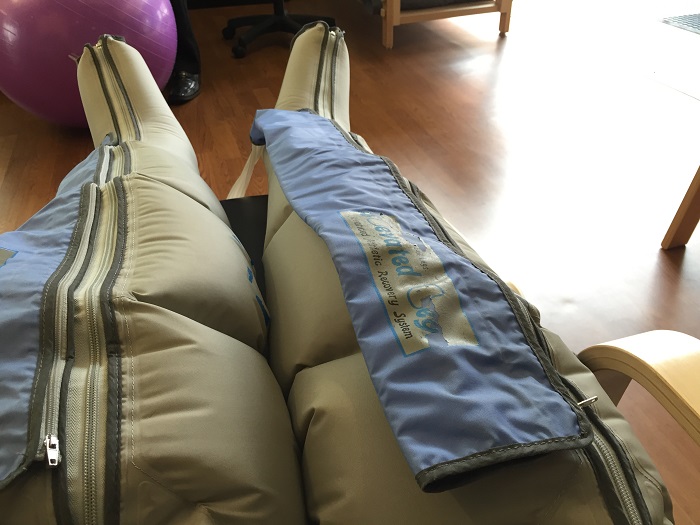
Are compression boots the gold standard? You might think so after seeing them on so many Instagram accounts, but the science says…meh. If you THINK they work for you then they do and that my friends is a big piece of recovery.
These techniques are designed to aid muscle recovery, reduce inflammation, and increase blood flow. They help athletes bounce back from high-intensity exercise, fend off fatigue, and prevent delayed onset muscle soreness.
There are a variety of recovery techniques that athletes, from beginners to elite athletes, can incorporate into their training sessions. You can spend a ton on things like compression garments or take advantage of a lot of cheaper options like epsom salts and foam rollers!
If you don’t recover right, you don’t run consistently, you don’t make progress…plus you’re cranky when injured and that’s not fun for anyone.
In this article, I’ll go over the best recovery methods every athlete should know and how they’ll help you recover better.
Why You Need Recovery Methods After Working Out
Workouts, especially high-intensity exercise like running, can put a lot of stress on your body. Your muscles, tissues, and immune function all take a hit when you push yourself during training sessions.
This stress can lead to fatigue, inflammation, and even exercise-induced muscle damage, which is where recovery methods come into play.
The primary goal of recovery techniques is to help your body bounce back faster. This can boost your athletic performance, prevent injuries, and reduce the chance of delayed onset muscle soreness, commonly known as DOMs.
Active recovery, like light cardio or dynamic stretching, can help increase blood flow, promoting faster muscle recovery. It can also improve your range of motion, which is essential for maintaining good form during your workouts.
Passive recovery, on the other hand, involves rest and therapies like massage, cold water immersion, contrast water therapy, and hot water immersion.
These techniques can help reduce inflammation and speed up the healing process by increasing blood flow to your muscles and tissues.
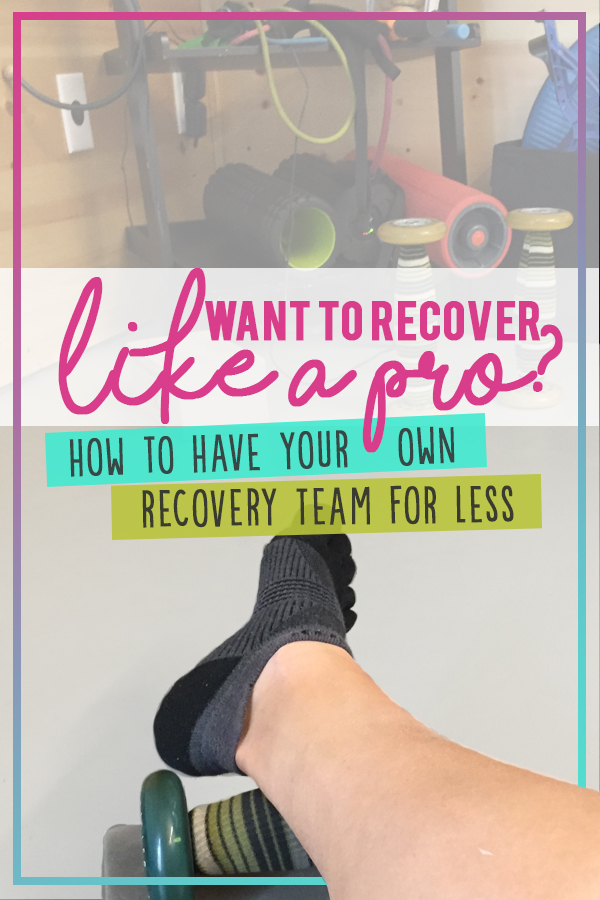
15 Best Recovery Methods To Know and Try
Recovery techniques are just as important as your workouts. Here are some of the top ones I recommend to my coaching clients as a running coach:
1. Nutrition
Nutrition plays an incredibly important role in muscle recovery and athletic performance.
After high-intensity exercise, your body needs fuel to repair tissue and reduce inflammation. One of the key recovery techniques is to consume a balanced mix of protein and carbohydrates post-workout.
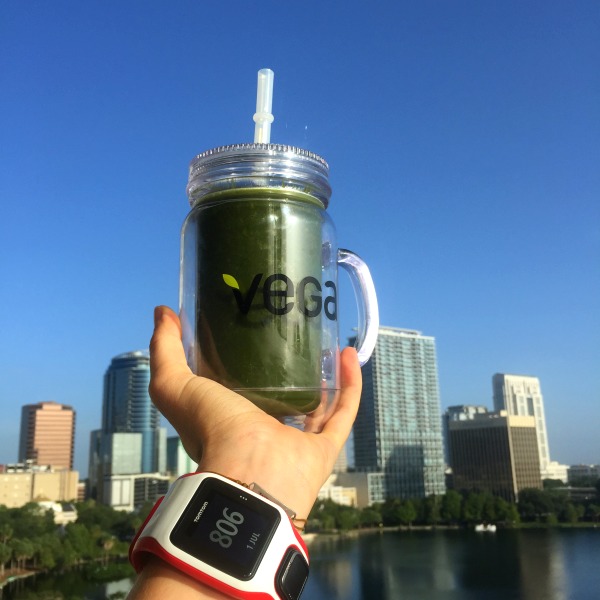
Protein powders, particularly those containing essential amino acids, can be a convenient way to boost your protein intake. Protein helps rebuild muscle tissue damaged during workouts, speeding up recovery and aiding in injury prevention.
Carbohydrates, on the other hand, replenish the energy stores in your muscles, reducing fatigue and helping you bounce back faster.
They also stimulate insulin production, which aids in transporting nutrients to your muscles, enhancing blood flow and recovery.
You can also consider incorporating herbs for muscle recovery into your diet.
2. Sleep
Sleep is an essential part of the recovery technique for any athlete. It’s during sleep that your body does most of its healing and repairing, making it a critical component of muscle recovery.
When you sleep, your body increases blood flow to your muscles, which helps reduce inflammation, fatigue, and delayed onset muscle soreness.
It also helps repair tissue damage caused by high-intensity exercise. Besides, sleep enhances immune function, which is crucial for injury prevention and recovery from exercise-induced muscle damage.

But it’s not just about the amount of sleep. The quality of sleep also matters. Deep sleep, in particular, plays a significant role in muscle recovery. During deep sleep, your body releases growth hormones that help repair and build muscles.
That’s why I’ve written a complete guide on natural sleep aids and even reviewed the Honest Sleep Number i8 360 so you can figure out exactly how to improve the quality of your sleep.
3. Massage
Massage is one of the most popular recovery techniques used by elite athletes to enhance muscle recovery after high-intensity exercise. It’s a form of active recovery that can significantly reduce inflammation and improve blood flow to the tissues.
Massage therapies can range from traditional hands-on techniques to modern forms like self-myofascial release using foam rollers.
The goal is to loosen the fascia, the connective tissue surrounding muscles, to improve the range of motion and facilitate better athletic performance.
One of the benefits of massage is it helps to alleviate delayed onset muscle soreness, commonly known as DOMs.
This is the pain and stiffness felt in muscles several hours to days after unaccustomed or strenuous exercise. Massage can also help to reduce fatigue and improve immune function.
For those who can’t access a professional massage therapist, foam rolling is a great alternative.
It’s a form of self-massage that involves rolling specific muscle groups over a foam cylinder. It’s a handy tool for promoting muscle recovery and injury prevention.
4. Rest
Rest is a critical component of any training program, regardless of whether you’re training for a marathon or consider yourself to be a casual runner.
It’s during this period of downtime that your body repairs and strengthens itself in the time between workouts. When you’re resting, your body works to replenish energy stores depleted during exercise and repair muscular damage and tissue breakdown.
As I mentioned earlier, getting sufficient sleep is also an important part of rest. Sleep is the time when your body undergoes most of its muscle growth and repair. Aim for at least 7-9 hours of sleep per night to ensure your body has enough time to recover properly.
Remember, rest days aren’t just about lounging on the couch all day. It’s also about light activities like walking, stretching, or doing yoga. These activities can help to increase blood flow, promoting recovery.
Incorporating rest days into your training schedule isn’t a sign of weakness but what will allow you to push yourself harder and see improvements.
5. Supplements
Supplements play an important role in recovery as well. They can fill nutritional gaps and provide essential vitamins and minerals that your body needs for optimal performance. But remember, they are not a substitute for a balanced diet.
Protein supplements are particularly beneficial for runners. They help repair and build muscles after a strenuous run. Whey protein is a popular choice among athletes due to its fast absorption rate.
Another supplement to consider is Omega-3 fatty acids. They are known for their anti-inflammatory properties, which can help in reducing muscle soreness after a run.
Also, don’t forget about electrolytes. These are minerals that help maintain your body’s ionic balance. They are lost through sweat during exercise, so it’s important to replenish them.
Supplements like sodium, potassium, and magnesium can help with this.
But keep in mind that you should always consult with a healthcare professional before starting any supplement regimen. They can guide you on the right supplements and dosage based on your individual needs and health conditions.
6. Stretching
Stretching is a fundamental part of any recovery routine. After a grueling run or a high-intensity workout, your muscles are often tight and tense. This is where stretching comes into play. It helps to relieve this tension and promote better blood circulation, which is essential for muscle recovery.
There are two main types of stretching: static and dynamic. Static stretching involves holding a stretch for a certain period, usually between 15 to 60 seconds. This type of stretching is best done post-workout.
On the other hand, dynamic stretching involves moving parts of your body and gradually increasing reach or speed of movement. It’s ideal before a workout to warm up the muscles.
Keep in mind that stretching should never be painful. If it hurts, you’re likely pushing too hard. Aim for a gentle pull. Also, try to stretch both sides of your body equally to maintain a balanced flexibility.
7. Active Recovery
Active recovery involves performing low-intensity exercises on your rest days. The purpose is to engage your muscles without putting them under a lot of stress.
It’s a way to keep your body moving while still allowing it to recover from more intense workouts. Active recovery, including active travel, is one of my favorite recovery methods.
For example, if you’ve had a heavy leg day at the gym, an active recovery day might involve a gentle bike ride or a casual swim. These activities keep your leg muscles working but at a much lower intensity. This can help to reduce muscle stiffness and speed up the recovery process.
Active recovery also has benefits for your cardiovascular system. Light activities can help to improve blood flow, which can aid in the delivery of nutrients to your muscles, further promoting recovery.
8. Compression Clothing
Compression clothing is a great tool for recovery after a rigorous workout. These garments, which include socks, shorts, tights, and shirts, are designed to improve circulation and reduce muscle soreness. They work by applying gentle pressure to your muscles, which can help to reduce swelling and inflammation.
Compression clothing can also aid in reducing lactic acid build-up, which is a common cause of muscle fatigue. By wearing these garments after your workout, you can help your body recover faster and get ready for your next training session.
Plus, compression garments can also provide support to your muscles and joints, reducing the risk of injury. This is especially beneficial for runners and athletes who engage in high-impact activities.
9. Yoga and Other Meditation
Yoga and other forms of meditation can play a significant role in your recovery process. Not only do they help you relax and reduce stress, but they also improve your flexibility and balance, which can enhance your running performance.
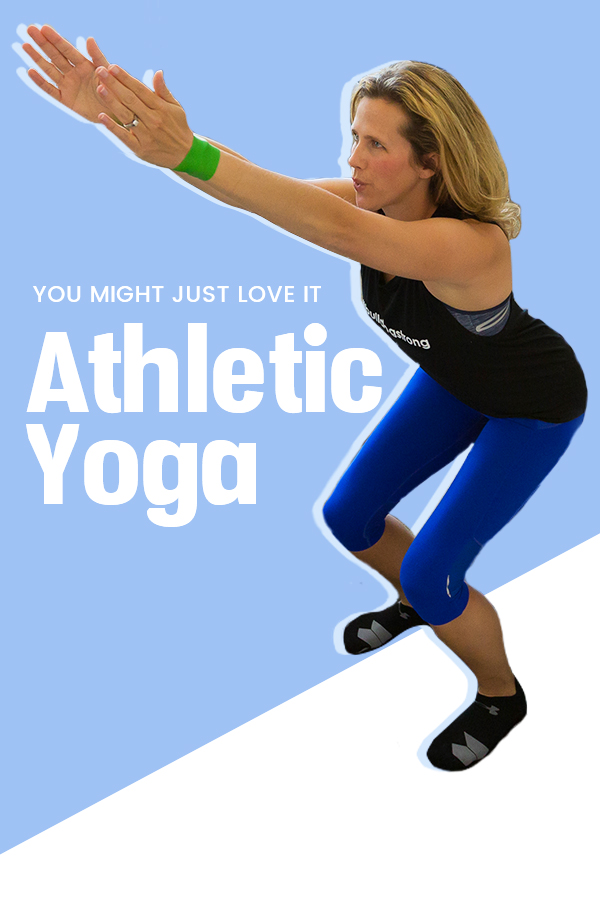
Yoga, in particular, is a great recovery tool. It involves controlled movements and deep breathing, which can help you to focus and calm your mind. This can be especially beneficial after a challenging workout or race when your body and mind need time to recuperatively rest.
Other forms of meditation, such as mindfulness and deep breathing exercises, can also aid recovery. They help to lower stress levels, improve mental clarity, and promote a sense of well-being.
10. Cold Water Immersion
Cold water immersion is a popular recovery method among athletes. It’s simple, and effective, and you can do it right at home.
This method involves immersively soaking in cold water, usually in a bath or pool. The cold temperature helps constrict blood vessels, reducing inflammation and swelling after strenuous workouts. It’s like applying a giant ice pack to your whole body!
When you immerse yourself in an ice bath, your body works to maintain its core temperature. This process can help boost your metabolism and improve circulation, aiding in overall recovery. Plus, it can be a refreshing way to cool down after a hot, sweaty run.
To try cold water immersion, fill a tub with cold water. Some athletes add ice for extra chill, but it’s not necessary. Immerse yourself for 10-20 minutes, focusing on the muscles that worked the hardest during your workout.
It might feel uncomfortable at first, but your body will adjust. Always listen to your body and get out if you start to feel too cold.
Seriously give cold water immersion a try after your next challenging workout. You might be surprised by how good you feel afterward!
11. Heat Therapy
Heat therapy is a great recovery method that can help soothe your muscles after a tough workout. It works by increasing blood flow and relaxing your muscles, which can help to reduce muscle pain and stiffness.
You can apply heat to your body in a few different ways. One of the most common methods is to use a hot pack or a heating pad. Just place it on the area that’s causing you discomfort and let it do its work in loosening up tight muscles.
Another method is to take a warm bath or shower.
The heat from the water can help to relax your muscles and relieve tension. If you’re feeling particularly sore, you might want to try adding some Epsom salts to your bath. These salts can help to further relax your muscles and reduce inflammation. It’s my absolute favorite post long run recovery tool.
Heat therapy can be a very effective recovery method, but it’s important to use it correctly. Don’t apply heat to an injury for the first 48 hours, as this can increase inflammation. And always make sure to protect your skin from direct contact with heating devices to prevent burns.
12. Drinking Water Regularly
One of the simplest yet most effective methods of recovery is drinking water regularly. Water plays a key role in maintaining the balance of bodily fluids, regulating body temperature, and aiding in digestion.
As runners, we lose a significant amount of water through sweat. This loss can lead to dehydration, which can hinder performance and recovery.
Staying hydrated is not only important during your runs but also before and after. It’s recommended to drink at least 8 glasses of water a day.
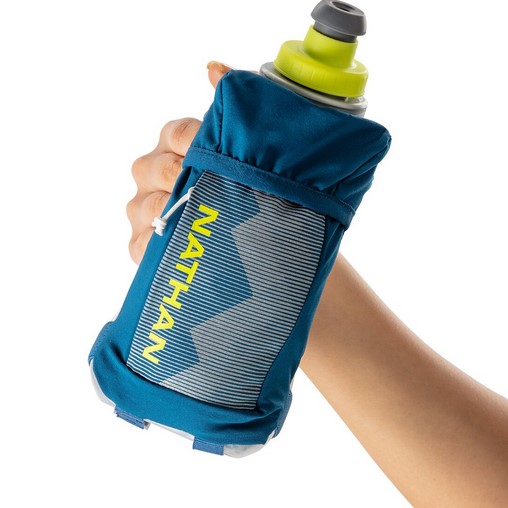
However, if you’re an active runner, you might need more to compensate for the fluid loss. Carry a water bottle with you throughout the day to make sure you’re drinking enough.
Plus, water isn’t the only source of hydration. Foods high in water content, such as fruits and vegetables, can also contribute to your daily water intake.
13. Hydrotherapy
Hydrotherapy, also known as water therapy, is a great method for recovery. It involves the use of water to soothe pains and treat various conditions. The buoyancy, warmth, and hydrostatic pressure of water can work wonders on your body.
If you’ve been running hard, your muscles will appreciate the gentle resistance that water provides. This method can help increase circulation, relieve muscle tension, and improve your range of motion. It’s a gentle way to continue working your muscles without adding extra stress.
There are different forms of hydrotherapy you can try. These include hot tubs, cold water immersions, and contrast water therapy (alternating hot and cold baths).
Each has its own benefits. For example, hot tubs can help relax tight muscles, while cold water immersions can help reduce inflammation and speed up recovery.
14. Foam Rolling
Foam rolling is a popular method of recovery that can help improve flexibility, reduce muscle soreness, and enhance performance.
This simple technique uses a foam roller, a lightweight cylindrical tool, to apply pressure on specific muscles. It’s a form of self-myofascial release, which is like giving yourself a deep tissue massage.
When you use a foam roller, you’re helping to break up adhesions and scar tissue that can form in your muscles from intense training.
This can help increase blood flow to the area, reduce inflammation, and speed up the recovery process. It’s a great tool to include in your post-workout routine.
To foam roll correctly, slowly roll an area of your body like your quads or calves over the foam roller. When you find a tender spot, hold for a few seconds to help release the tension.
Remember to breathe deeply and try to relax as much as possible. It might be uncomfortable at first, but with regular practice, you’ll start to feel the benefits.
Just like with any other recovery method, it’s important to use foam rolling correctly to avoid injury. Don’t roll directly on a joint or bone, and avoid rolling on an injured area. Always consult with a professional if you’re unsure.
15. Electrical Muscle Stimulation (EMS)
Electrical Muscle Stimulation, commonly known as EMS, is another great recovery method. This technique uses electrical impulses to cause muscle contractions, which can help improve muscle strength and promote recovery.
EMS works by sending electrical signals to your muscles to promote muscle contraction. These contractions can help increase blood flow to the area, aiding in recovery and reducing muscle soreness.
It’s a great tool for those who are recovering from intense workouts or injuries, as it can help speed up the recovery process.
Signs of Overtraining
As a running coach and personal trainer, I’ve seen many runners who push themselves too hard in their training.
Overtraining is a common issue, and it’s important to recognize the signs early to prevent injuries and setbacks. Here are some clear indicators of overtraining:
- Persistent fatigue: You’re always tired, no matter how much rest you get. Your body needs more time to recover from your workouts.
- Decreased performance: You’re not improving or even regressing in your workouts. You might also feel sluggish and have difficulty maintaining your usual pace.
- Mood changes: You may feel irritable, depressed, or lose interest in your training.
- Sleep disturbances: Even though you’re tired, you might have trouble falling asleep or staying asleep.
- Frequent illness or injuries: Overtraining can weaken your immune system, making you more susceptible to colds, flu, and other infections. You might also notice that you’re more prone to injuries.
- Changes in appetite: You may lose your appetite, or conversely, you might feel hungrier than usual.
If you’re experiencing any of these signs, it might be time to reassess your training plan. Consider taking some time to try these recovery methods to allow your body to heal. I also have a complete guide to overtraining that I highly recommend you check out.
What area of recovery would you like to know more about?
Would you flip for a place like this?
Other ways to connect with Amanda
Instagram: RunToTheFinish
Pinterest: RunToTheFinish
Get new posts via BlogLovin
Read Next: Complete Guide to Post Marathon Recovery >>
Checkout the Ultimate IT Band Solution >>

